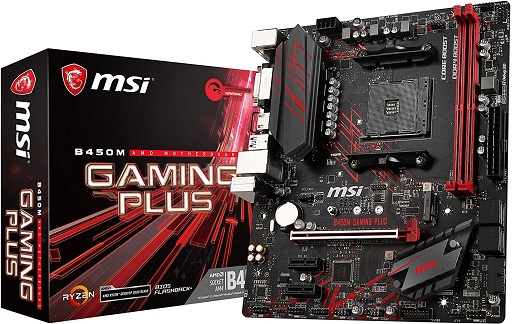How to choose a Motherboard: In this guide, you will learn some basic information about computer motherboards. It is a more complex device than it looks, so it is important to understand what factors influence the quality and longevity of your system.
There are many different manufacturers, each with innovations and variations on a design theme. Choosing the right motherboard for your requirements might be difficult at times, but you will soon master it by reading this article.
Basic knowledge about motherboards: not all hardware has to work together well; compatibility comes at a price; three main variables affect performance; understanding these can help make your choice easier; if unsure, ask somebody knowledgeable or consult user reviews online (e.g., type “name-of-the-motherboard user review” into Google).
More advanced users can check out the official specifications of their motherboard for i5.

The three main variables are these:
Form factor – ATX vs micro ATX vs Mini-ITX Compatibility with CPU type(s) Size/number of slots/connectors available to install graphics card(s), other expansion cards, etc.
Last two affect performance the most. Depending on what you plan to do with your computer, they should be chosen.
Form factor (How to choose a Motherboard)
while this is not a major concern for entry-level users, the form factor can significantly impact performance in some cases if you plan to upgrade components or add extra ones later. This usually affects micro ATX motherboards more than full-sized ATX ones because it limits the number of PCI/PCIe slots available.
For example, there are fewer PCI and PCIe slots on micro ATX boards than most full-sized ATX ones; hard drives tend to be placed closer to each other (which can cause compatibility issues).
More often than not, full-sized ATX motherboards outclass their smaller counterparts by having more CPU sockets/ots, more USB ports, better sound, more memory slots/capacity, etc.
CPU compatibility (How to choose a Motherboard)
while most modern motherboards can support CPUs from both Intel and AMD (the list of compatible CPUs usually comes included within the manual or can be found on the manufacturer website), this is not always true for entry-level ones.
You may also like TPM 2.0: How to fix Windows 11 TPM error
Also, you should check what kind of socket your desired CPU has and whether it will work with your motherboard if you plan to upgrade in the future.
Size and number of available expansion slots
this greatly affects performance because only one PCI slot limits how many graphics cards you can install at once; micro ATX motherboards often have less capacity for upgrading components than full-sized ATX ones.
These are the factors that affect overall performance the most.
However, other important factors do not have a major impact on performance but can still influence it enough to make a difference in some cases:
The number of memory slots available Sound chipset and quality USB ports Power supply type Fan headers or dedicated cooling systems included Additional items which might come with the motherboard (e.g., WiFi module) Ease of using certain onboard components (e.g., overclocking utilities) Vendor support for your region.
This is an example of one entry-level mATX board from Asus; as you’ll learn below, this model comes from their ROG Strix line, which is primarily aimed at gamers – this means it has more features that will appeal to them, such as camouflage design and LED illumination for cooling fans.
This is another entry-level micro ATX board from Asus; the primary difference between the two are different types of supported RAM, the number of USB ports, and other differences in features (which you can read about below).
Asus has a long list of board models for all major form factors, ranging from basic entry-level ones to top-of-the-line enthusiast-grade boards. You can see their full lineup here.
It’s also worth noting that ASUS also has many ROG branded motherboards that are aimed at gamers; they have several lines, including Strix, TUF Gaming, and more. I’ll talk briefly about what this means below. This is an Asus ROG Strix motherboard.
You may also like How to Fix BOOTMGR is Missing Errors 2623118 in Windows
ROG Strix is the more premium line; they aim for gamers and overclockers alike. These are slightly pricier than some of their other lines, but not by much. Some ROG boards have nifty things like swappable color backplates on their USB ports metal-reinforced PCI-e slots so you can use heavier graphics cards without having to worry about breaking your motherboard. A lot of them also come with built-in “gaming” features that let you do things like overclock or control fan speeds directly from the UEFI BIOS etc., stuff that’s useful if you’re into tinkering with your hardware settings to get a little bit of extra performance, but isn’t really necessary for most people who just want to pop in their hardware and go. I’d highly recommend not touching anything in the UEFI if you don’t know what you’re doing unless you want your PC to look like this.
Asus’s TUF line is a fairly new addition; it takes many of its design cues from ROG but tends to be a bit more “hardcore” with features like metal-reinforced rear IO shields and PCI express sockets, things that make it slightly more suitable for heavy LAN parties or 24/7 use in servers, etc. rather than overclocking. They aren’t too expensive either, cheaper than most ROG boards. This is an Asus TUF Gaming motherboard.
Lastly, we have Asus’s EX/Proline, which looks fairly similar to their other P4 boards from the outside. These boards have been around for a while, and they used to be sold as an enthusiast board (you can see that by their color scheme). So far, I’ve only seen them in white, but maybe we’ll see them in other colors eventually.
The EX/Pro main difference with other Asus models is that it has only USB headers instead of USB and Firewire combo headers like all other Asus P4 boards. This also means there’s no Firewire on the motherboard at all.
Other than this, these boards are pretty much identical to their mainstream brothers: same layout, components… If you want a board without Firewire, this might be an option for you… if, for some reason, you need more than two SATA ports. Otherwise, I wouldn’t bother with these boards at all.
Conclusion
When it comes time to purchase a motherboard, there are many factors you need to consider. The most important decision is deciding which chipset the motherboard uses. After that, you need to decide on form factors, features, and budget. By understanding your needs and what each option offers, you can decide which motherboard is right for you.
Would you like to read more about How to choose a Motherboard-related article? If so, we invite you to take a look at our other tech topics before you leave!












